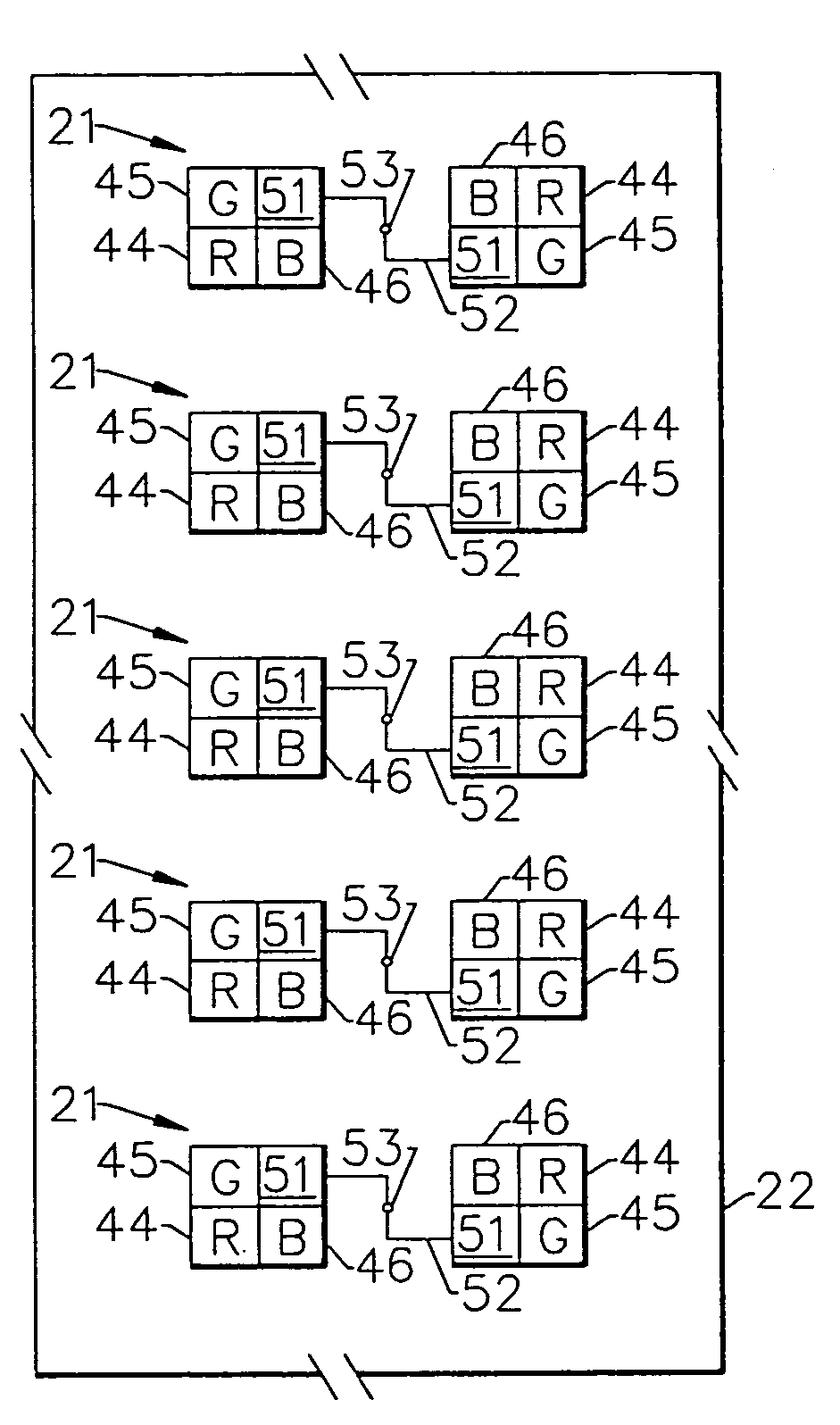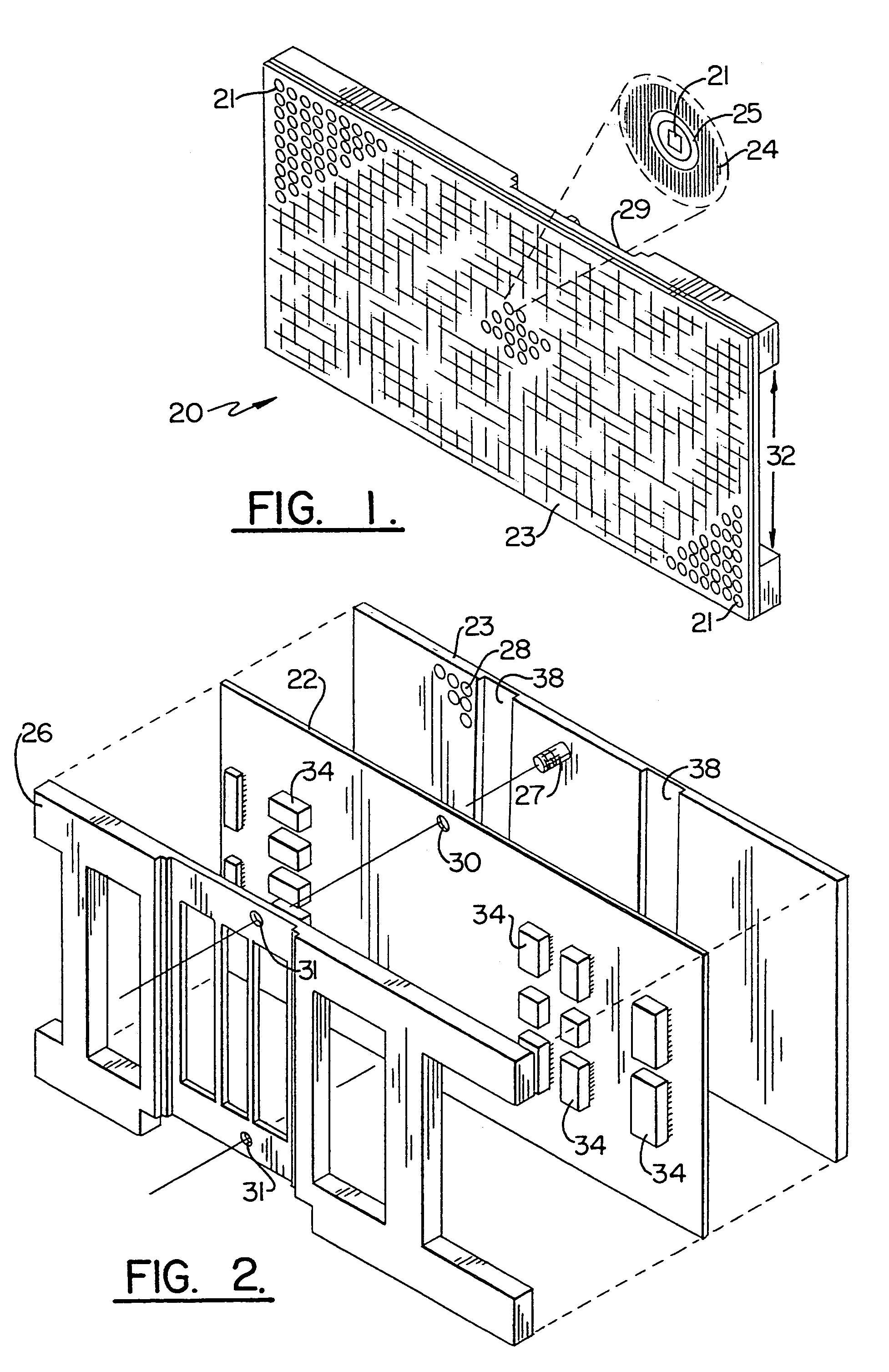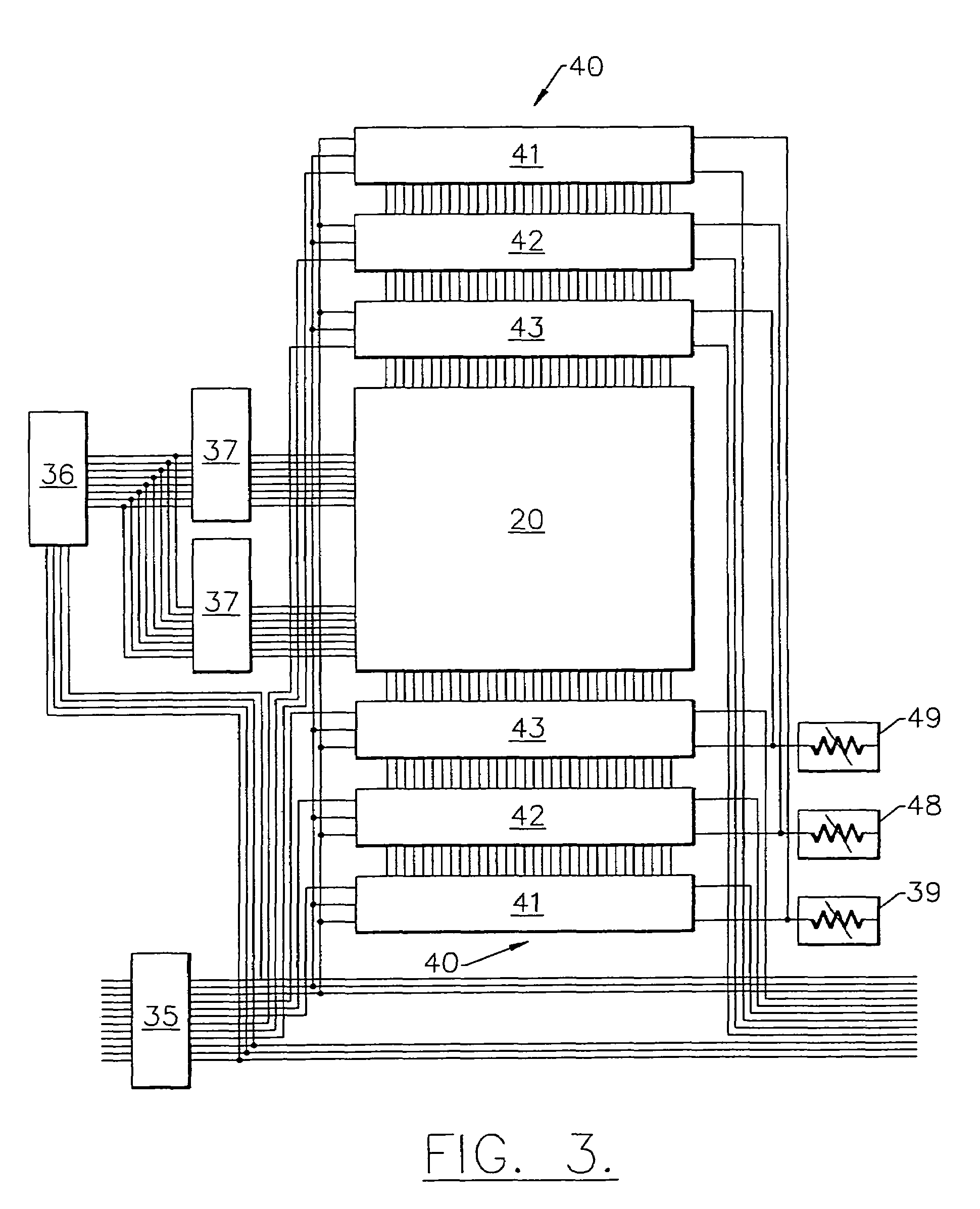True color flat panel display module
a flat panel display and modular technology, applied in the field of true color flat panel modular electronic displays, can solve the problems of lack of brightness, failure of flat panel displays incorporating leds to reach their theoretical potential in the actual marketplace, lack of brightness, etc., and achieve the effect of increasing the overall thickness required for the display
- Summary
- Abstract
- Description
- Claims
- Application Information
AI Technical Summary
Benefits of technology
Problems solved by technology
Method used
Image
Examples
Embodiment Construction
[0038]The present invention is a thin flat panel display module that can produce a full range of-true colors. As set forth above, the term true color refers to a much greater range of colors than have been previously available from prior devices incorporating either light emitting diode or other technologies.
[0039]The invention provides a thin flat panel display module suitable as a subassembly for construction of any size, although predominantly wall sized, thin flat panel displays.
[0040]The modules of the invention are capable of displaying portions of any visual image, either moving or stationary, in either any color or combination of colors. By combining modules horizontally and vertically, virtually any size of display board can be constructed.
[0041]FIGS. 1 and 2 are front and rear perspective views showing the module broadly designated at 20. A matrix of substantially flat full color pixels, several of which are labelled as 21 in FIG. 1 are mounted on a first surface of a prin...
PUM
 Login to View More
Login to View More Abstract
Description
Claims
Application Information
 Login to View More
Login to View More - R&D
- Intellectual Property
- Life Sciences
- Materials
- Tech Scout
- Unparalleled Data Quality
- Higher Quality Content
- 60% Fewer Hallucinations
Browse by: Latest US Patents, China's latest patents, Technical Efficacy Thesaurus, Application Domain, Technology Topic, Popular Technical Reports.
© 2025 PatSnap. All rights reserved.Legal|Privacy policy|Modern Slavery Act Transparency Statement|Sitemap|About US| Contact US: help@patsnap.com



